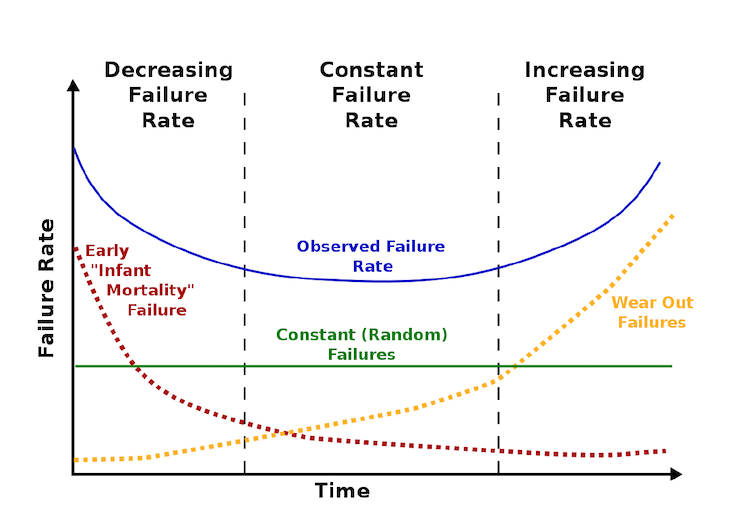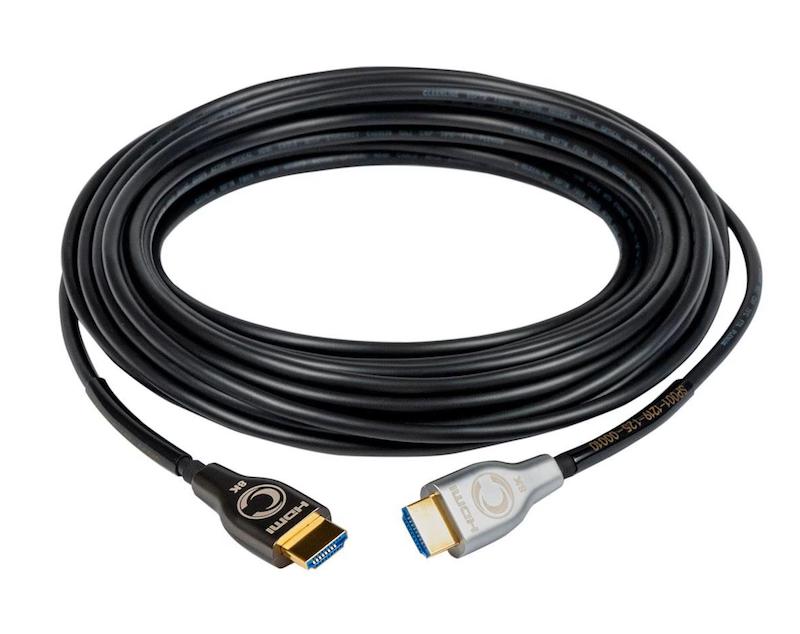I’ve always enjoyed the simplicity of the Bathtub Curve when it comes to observing the technology lifecycle. The electronics that we sell generally go through three distinct stages: Early Failure (Infant Mortality), Useful Life (Constant Random Failure), and End Of Life (Wear-out Failure). Until recently, we’ve shied away–out of fear–from proactively addressing this lifecycle head-on with our clients. That all changed last year when we decided to openly talk about the expiration date of electronics the same way we might look at the expiration date on a gallon of milk.
By placing the elephant in the room front and center, we’ve been able to re-orient our sales and service touchpoints around the inevitable need to upgrade systems every three to five years. If clients ever complain or sound surprised, we’re able to reference countless examples of technology not behaving properly, prompting groans and knowing nods from them. As Ice T said, “Don’t hate the player, hate the game.”

0-90 Days: Infant Mortality
Our company’s standard warranty period is 90 days with an optional two-year extended warranty should customers express an interest. I love the 90-day warranty because it tends to address the “infant mortality” issues without setting us up for an extended period of non-billable work. Clients who feel passionately about peace of mind opt for the two-year plan, further monetizing service work for us. There’s nothing we can do about infant mortality product failures in our business, and responding quickly to these issues minimizes client frustrations. To that end, our manufacturer relationships are predicated on a mutual obsession with delivering customer happiness.
90-1,000 Days: Constant Random Failures
No matter what, some portion of our customers are always going to experience issues with “ghosts in the machine.” It’s a part of life that we all can relate to, but I find our industry is hesitant to address these issues proactively. In my home technology integration company, we conquer this by leading clients through a visualization exercise during our initial meetings where we talk about life in 12 months, after the system has been installed and working well for a long time. We then describe a scene where it’s
9 p.m. on a Sunday evening, and they’re settling down to watch their favorite show. They pick up the remote and… nothing works. We pause and let that sink in, creating an uncomfortable silence for effect. We then ask them what they envision at that point. How do they feel in the moment? Over time, we’ve experienced a consistent answer from most of these conversations: “Frustrated!”
We continue with the exercise, describing how we used to be a company where if you wanted us on a Sunday evening at 9 p.m., we weren’t around. The best you could get was our answering service or maybe voicemail. The most irritated customers might text the owner or their sales rep. None of these options produced great results.
Our mission during the exercise is to manufacture crisis and create feelings of discomfort. In other words, expose a pain point and jab it a bit. We try not to overdo it. Once we’ve done our jobs and there’s a good bit of virtual pain created, we swoop in with the medication.
We move from contrasting the old way of doing things to today’s world where 24/7 remote support and proactive monitoring are becoming the “new normal.” We describe how we could’ve avoided the 9 p.m. panic by proactively diagnosing the small issue a few weeks prior and fixing it remotely. We show them a self-service app where they can reboot their systems or call, text, email or chat with us 24/7/365. I’m a co-founder of Parasol, but there are many ways to deliver this kind of support to customers, including companies like OneVision, Axius, or trying to deliver it in-house. I feel like it’s not a question of whether 24/7 remote support should be part of an integrator’s product offering, but which method works best for their customers.
In the middle of the bathtub curve, catering to customer pain by delivering reliable service has stood us in good stead and kept a relationship going during a period which can typically be a dry spell for integrators, where the client relationship can be vulnerable to poaching by competitors should they feel neglected.
1,000 – 1,800 Days: Wear-Out Failures
This stage is our biggest area of opportunity. Having been in business for 17 years, that’s easily three to four cycles of product wear-out failures. For the most part, those upgrades have come through passively where the client calls in for help. We’re now counting down the days to expiration and using that slow-burning fuse to drive email campaigns tailored to the product or service they purchased. Because nobody likes pain, presenting the idea of proactively upgrading something before it fails resonates well with our customer base. The main challenge, ironically, has been getting our company software platform to properly measure the cradle-to-grave lifecycle with the type of granularity needed to drive marketing campaigns.
By orienting our sales-and-service efforts around the bathtub curve, we’re seeing new business come along in a more predictable stream. Rather than sitting back and waiting for it, we’re going out and jabbing the pain point, followed quickly by medication. If we continue to follow this method, going out and getting new customers could become significantly less important down the road, as we build our self-sustaining ecosystem.









